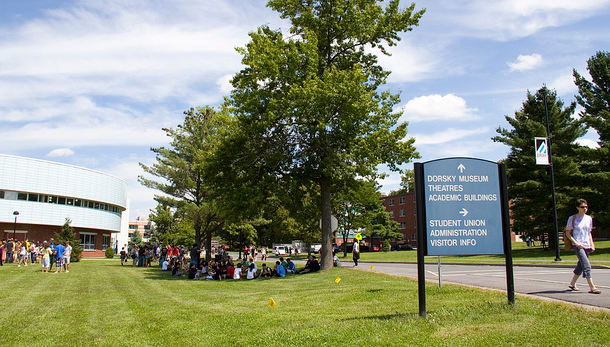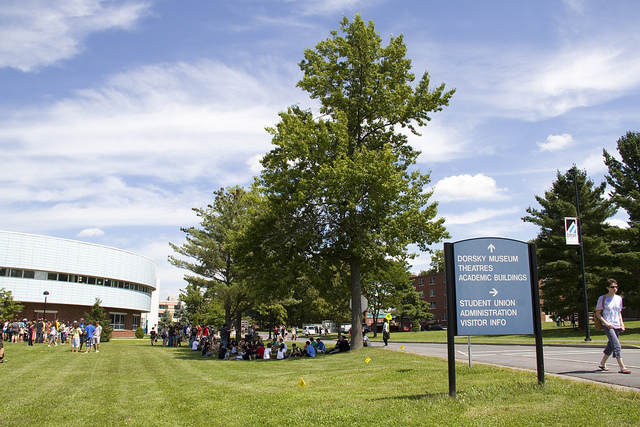

SUNY New Paltz recently climbed up the U.S. News & World Report’s College rankings, improving in three different categories.
New Paltz rose from seventh to sixth in the best regional universities in the North with both bachelor’s and master’s degree programs category. The school also bettered its position in the public and private regional universities in the North with bachelor’s and master’s degree programs, going from 33rd up to 30th in the rankings.
The three categories that help to determine rankings included six-year graduation rates, the percentage of full-time faculty and peer review from executives at other higher education institutions. According to a press release, the six-year graduation rate increased from 64 percent to 68 percent and the full-time faculty grew to 75 from 74.
Vice President of Enrollment Management L. David Eaton attributes this success to improved academics, as well as student and faculty performance.
“I think it began with the quality of the students, the middle 50 percent SAT, high school averages, things like that. So we started notching our way up,” Eaton said. “Then it’s easy to work with smart students and the faculty could raise the level of academic rigor in the classroom because they have well prepared and academically motivated students.”
Eaton believes that such dedicated students generally graduate on time or nearly on time. Dean of Enrollment Lisa Jones believes the graduation rates have increased as a result of the college’s well-rounded selection and acceptance process, as well as opportunities offered by the school.
“Graduation rates are increasing because the college looks at students holistically – choosing to enroll academically strong and diverse students,” Jones said. “Paying attention to both the in and out of class experiences – residence life, leadership opportunities, internships, numerous academic and social clubs and organizations — —timeliness to degree and course offerings.”
While he is proud of the achievement, Eaton does not think the rankings are so important to potential students, but rather to the institution’s self image. In Eaton’s opinion, the benefits lie in students being able to go home knowing they are in a “well ranked academic community” and it provides “good PR.” He also notes the controversy surrounding the ranking methodology and how they can really weigh very different and complex institutions of higher education.
“For me I think how well New Paltz or any institution does its job really can be measured in how successful its students are; do they come here, do they stay, do they graduate and ultimately gain full employment,” Eaton said. “So it’s those measurements that I think are probably very meaningful.”
For Eaton, the ranking is an honor, but improving the profile of the school is about what students and their families say about it when they return home. While this is what he considers most powerful, it is only positive if student experiences are positive.
“Overwhelmingly, I hear from students that they love it here,” Eaton said.“They really love this place so when people hear that when you go home, they go ‘Oh, well that’s a place I’d like to think about.’”
The rise in ranking was not surprising to Eaton because he knew that some of the main metrics used such as graduation rates, retention, student faculty ratios and SAT scores had gone up. He was pleased that peers opinions of the school were more favorable, owing that to strengthened reputation and furthered recognition of “what a jewel this place is.”
“It’s all the chemistry, the three big elements,” Eaton said. “You take very talented students and you take very talented and motivated staff and a great location and good facilities and shake it all up and you come up with a very, very good institution.”
